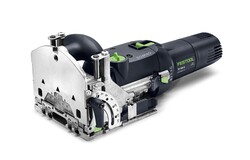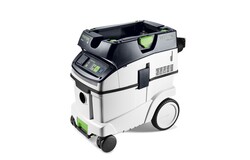Round profile joints with the handrail fence of the DOMINO jointer
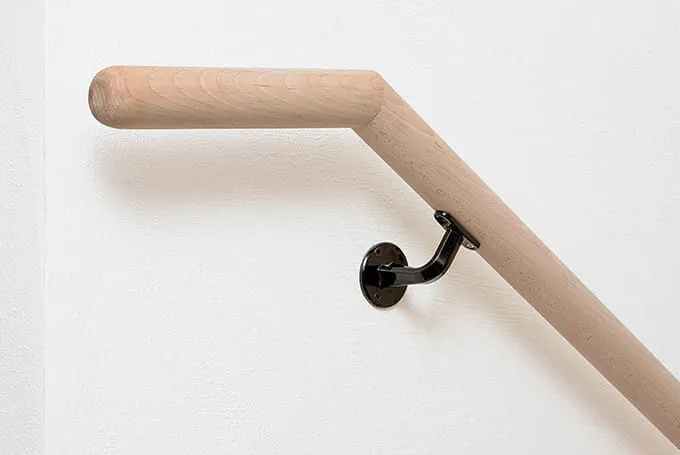
Description
Note:
The handrail fence can be used to cut a round profile joint with a diameter between 35 and 60 mm.
Tools/accessories
Preparation/set-up
-
Before producing a round profile joint, you must take the following into account:
Festool offers two dowel qualities for the DOMINO jointer:- Dowel made of beech for interior applications
- Sipo dowel for external applications

-
This illustrated guide describes how to join a profile with a diameter of 35 mm at an angle of 120°. The profiles are joined with a beech dowel measuring 8x40 mm.
Before producing the first round profile joint, a test cut must be made in order to ensure that the joint will fit precisely.
This is carried out as follows:
Slide the handrail fence completely onto the DOMINO jointer table and secure using the rotary knobs fitted on the right and left side of the handrail fence.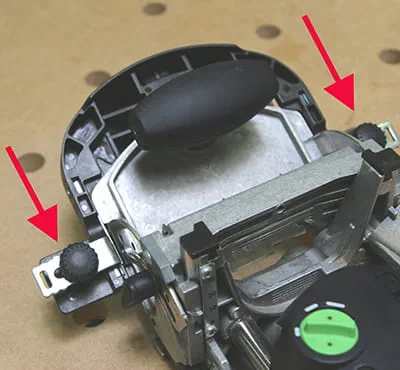
-
Set the cutting angle of the round profiles (in the example, 60°) at the table angle setting device of the DOMINO jointer.
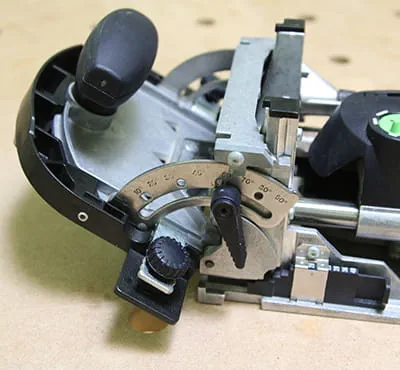
-
To position the dowel centrally, the round profiles are placed beside one another in the same manner as they are subsequently joined by the DOMINO. Mark the dowel position with a line.
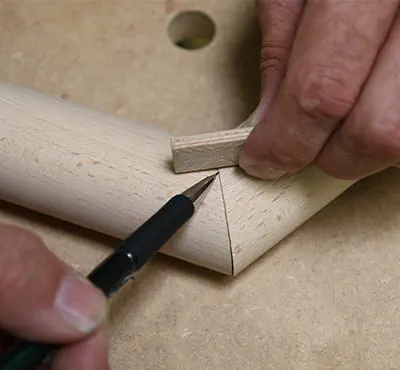
-
Place the round profile flush with the handrail fence of the DOMINO jointer.
The dowel position marking is now used to set the table height of the router.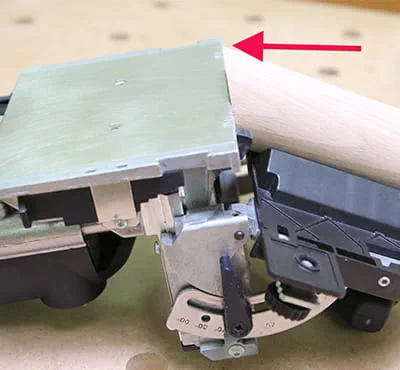
-
The two centre points of the stop pins on the router table form a straight line.
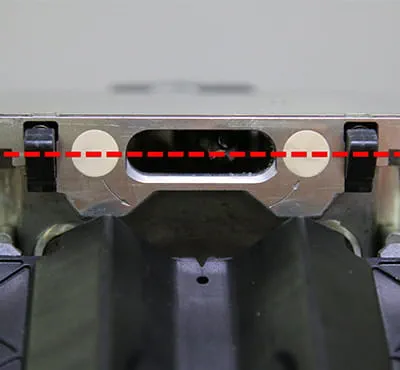
-
The height of the router table is set so that the dowel position marking made earlier and the imaginary straight line are at the same height.

-
The clamping lever is used to set the correct table height.
Once the initial adjustments have been made, the test cut for the round profile joint can be made.
Connect the suction hose to the machine and extractor and execute the cut.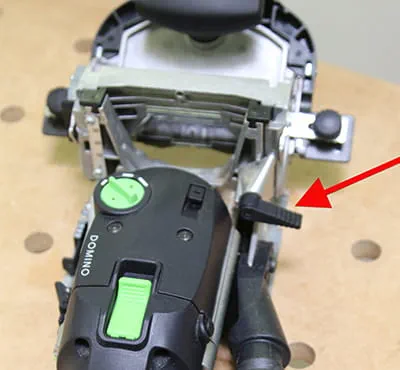
-
After joining the test cut, a slight deviation in fitting accuracy is possible.
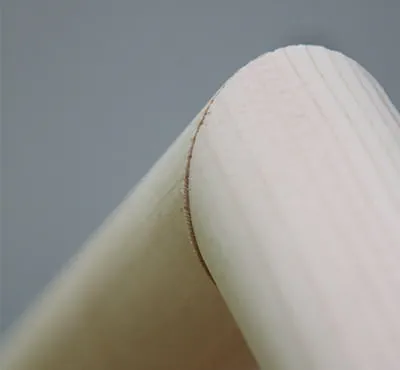
-
In this example, the cut hole is displaced from the centre of the round profile. The following correction steps now have to be carried out:
Open the two clamping screws.
Two adjusting screws are attached to each external side of the handrail and can be adjusted using a 2 mm hex key.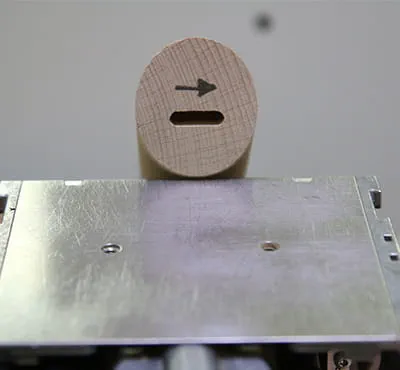
-
To align the handrail fence and thus the cut hole exactly and centrally on the router, the hexagon socket screws are screwed in either to the right or left, depending on the direction of displacement, or screwed out on the opposite side.
Tip:
The screws have an M5 thread and a pitch of 0.8 mm. This means that each full rotation of the screw effects a displacement of the handrail fence on the router table of 0.8 mm.
This means:
With an adjustment of 1.6 mm (corresponds to two revolutions) on the left-hand side, an adjustment in the opposite direction of 1.6 mm (corresponds to two revolutions) must also be made on the right-hand side.
After the adjustments have been made, tighten the clamping screws and continue the routing process.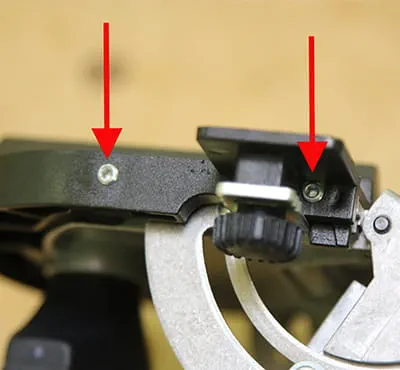
-
Note:
This adjustment is only made once! After removing the device from the machine and subsequently installing it, this adjustment is no longer necessary.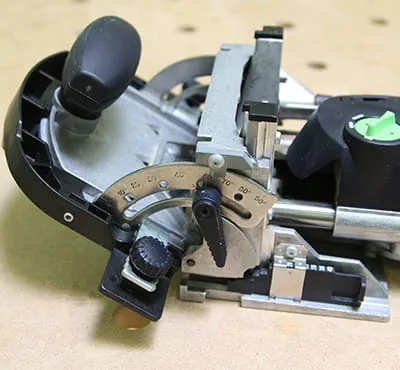
Procedure
-
After this readjustment, the original railing can now be cut quickly and accurately.
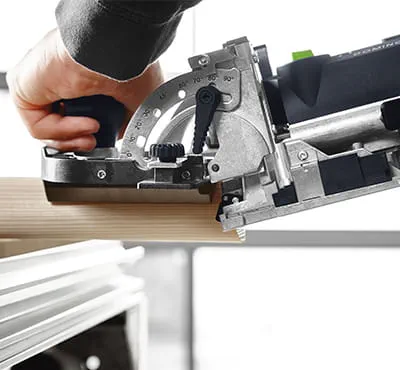
-
The unique geometry of the DOMINO dowel means that the joint cannot be twisted and is stable enough for a railing. It can be adjusted quickly and easily to another angle for a round profile joint.
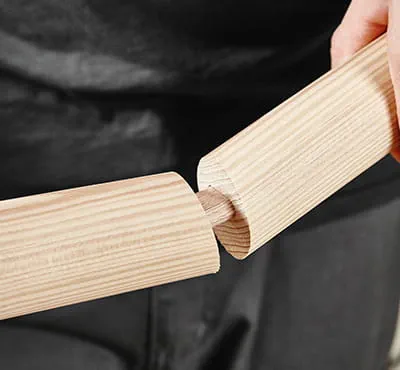
-
Our illustrated guides and work results are documented working steps that we have performed in practice. They are individual examples and do not guarantee or promise that users will obtain the same results. The results will depend on the user's experience and skill, as well as the material being used. Illustrated guides do not replace any Festool operating manuals and/or safety instructions. Liability for ensuring that the information, instructions and applications are free from content defects and defects of title, in particular with regard to the absence of defects, correctness, freedom from third party intellectual property rights and copyrights, completeness and fitness for purpose, is excluded. Claims for damages made by the user, regardless of their legal basis, are excluded. These liability exclusions are not applicable if the damage was intentional or caused by gross negligence, or in cases of statutory liability.
We cannot accept liability for damage resulting from defects.↑




































